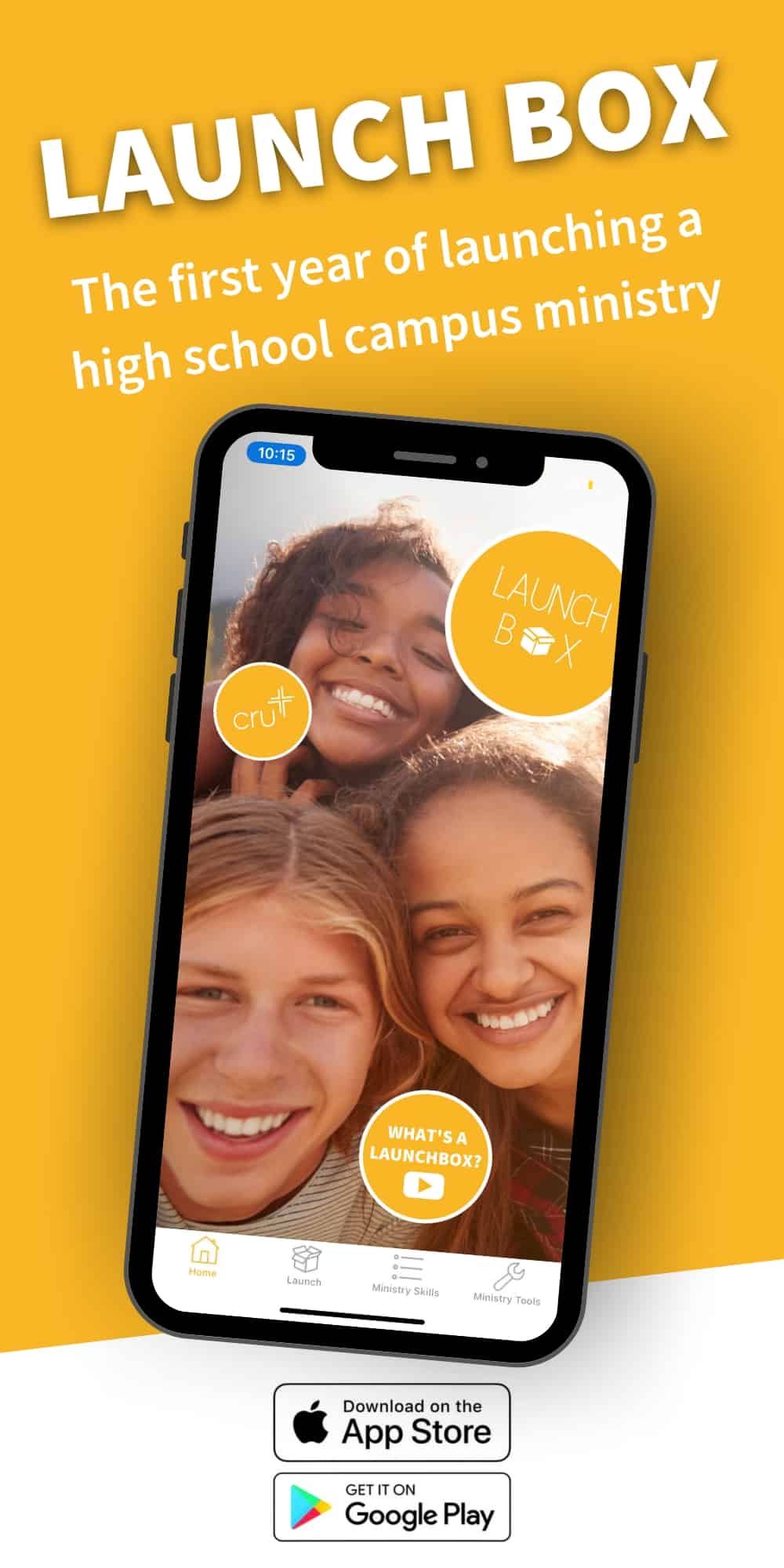Imagine you’re at a coffee house or fast food restaurant surrounded by students. It’s crazy, loud, and everyone’s trying to talk at once. You love it because one of your goals was to create a natural setting for students to feel safe to be themselves, a place to go deeper.
You know that God called you to share about the most important relationship these students can ever experience, and you want it to come across as natural as possible.
So how do you go from, “How is your day?” to “How is your soul?”
Principles When Transitioning to the Gospel
Transitioning from a normal conversation to a “God conversation” can be challenging. It can feel awkward to you and that can sometimes cause anxiety. It might help you to keep these principles in mind…
- Most students don’t talk about Jesus every day, so a degree of surprise will be inevitable.
- It’s worth the risk. Their eternal destiny could be riding on it.
- The longer you wait to have gospel conversations, the harder it is to bring it up. So use the first good opportunity you can to go spiritual.
- Stay positive and prayerful. God is fighting for their hearts. A less than positive first response should not derail your enthusiasm. Relax and enjoy your audience.
Tools for Transitioning to the Gospel
Sometimes using a tool can be really useful in taking the conversation spiritual. Here are four that we would recommend:
- Your personal testimony.
Your testimony can be used very naturally. It’s your unique story shared briefly to build a context for our conversation about Christ. - Solarium.
Because images connect deeply with our emotions and experiences, they enable us to engage in meaningful conversations about life and God. These tools provide 50 original photographic images and a few simple questions – allowing you to enter and explore the lives of people around you. - The triangle diagram.
This is a simple explanation that highlights how people are three-dimensional. It can lead into some great gospel conversations. - Leading questions. Using open ended, gospel starter questions that lead the conversation towards Christ. Questions like…
- “Can you tell me more about your story?”
- “Is your family religious?”
Transitioning conversation to talk about spiritual things is worth the risk. A student's eternal destiny could be riding on it.
Using Your Story
Let’s take a closer look at personal testimony. Let’s say you’re meeting with a student named Abby and some of her friends. You have been meeting with these young ladies for a couple weeks. Now it’s time to take the hours of relational banter and mutual respect that sits between you to begin probing about where they stand spiritually. It’s one of the most exciting moments any youth leader can experience. Here’s what the conversation could look like:
“Ladies, we’ve been meeting for a while now, and I haven’t told you about the most important relationship in my life. Would you mind if I take a few minutes to tell you about it? It’s the story of how I began a relationship with God!”
This does several things:
- It shows the students how you’ve been changed, which builds expectations that they can be also.
- They see how Christ has impacted your life, which takes something abstract and makes it concrete and relevant for them.
- They hear the message of God’s loving initiative, forgiveness, and invitation into relationship with Him.
Once you’re finished with your story, ask the group what they thought. Then you can ask if they would like to share their stories too. After hearing your story, their interest will be piqued. It may just be the perfect time for you to introduce a simple gospel message.
One Link in the Chain
Keep in mind this appointment is another touch point link in the chain of your relationship with these students. This chain begins from the first meeting, then stretches through discipleship, and goes on to spiritual leadership. Who knows where it will end? Stay prayerful and focused. And watch how the Lord will use you to win, build, and send students for Him on their campus!





